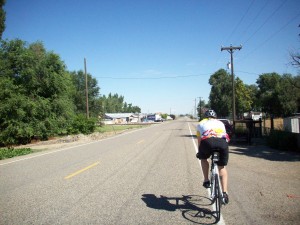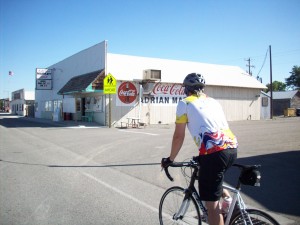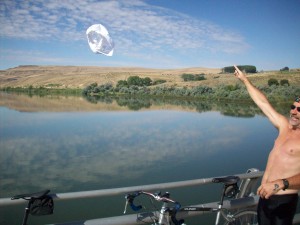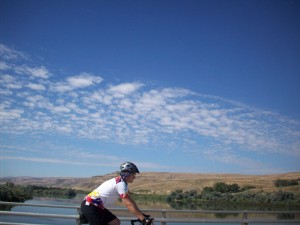
Long-distance riding is for the most part mental. Proper planning gives you the confidence to complete your first 100-mile ride. If you’ve got at least one 50-miler behind you, it’s time to start thinking about a century ride.
The Route
Fire up the Google Earth program on your computer. Choose a route on country roads, the less traffic the better. Google Earth has a convenient measuring device that lets you plan the route down to the mile. Plan on adding aid stations at regular intervals, spaced no further than 20-to-30 miles apart if possible. Convenience stores are all over the place, use them to refuel, and fill your water bottles.

Prevailing Winds
Plan your first century ride in your area, where you’re familiar with the prevailing winds. For example: On the West Coast, prevailing winds almost always blow from west to east. But they typically don’t start up until surface heating prompts them, typically sometime after about noon. Plan to start your ride at sunrise when it’s calm, heading west. When you make the turn back at about 50 miles, you have the wind at your back, just when you need it.
Terrain and Hills
Rollers and slight hills are all part of a century riding and can’t be avoided. But it’s almost impossible to plan a century ride without at least a few big hills. Try to conquer them within the first half of the century, the earlier the better. Hills can bring on your second wind if you’re still relatively fresh, but can cause cramping if encountered too late in the ride.
Time Involved
Plan on spending about 8 hours for an average century ride. The actual ride time will likely be less than that, but the accumulated time for breaks, stop signs and bathroom breaks require more time than you might think. The actual ride time on your bikes computer should be around 6-to-7 hours, traveling at about 14-to-16 miles per hour. Check the time at your 50 mile rest stop or break. If you’re somewhere under four hours, you’re on track.
Apparel Options
It’s often cool early in the morning, too cool for most cycling jerseys. Plan on wearing a T-shirt in combination with your favorite cycling jersey. Stash it when it starts to heat up outside. Pick it up at a later date. Never leave home without the best cycling shorts you can afford. Multi-panel shorts might not feel the best when you’re off the bike, but you’ll thank yourself for that thick, luxurious pad after about 50 miles. Padded gloves also help to prevent numb fingers and hands.

Vital Gear
Pack some essential gear for your century ride. At this point, you should be able to fix a flat tire. Your bike should be equipped with a frame pump, and you should know how to use it. Don’t try to patch tubes. Pack at least two spare tubes, and replace flat tubes with fresh tubes, but carry patches just in case. Carry a multi-tool for loose bolts and parts, a few medical supplies like gauze, and don’t forget the antacids. Heartburn is common on distance riding. Everything should fit into an underseat pack.
Five Days Before
The days leading up to your first century are not irrelevant. Don’t overdue your training. If you’re planning on doing it on Saturday, take only shorter rides of about 20 miles or less Monday through Thursday. Friday spend about 20-30 minutes on the bike; mostly all very easy paced except for 3×30 second medium paced bursts to wake up the legs and keep everything moving for the next days ride.
Food Suggestions
Salad and rice are good choices leading up to big ride. Salad keeps you regular, and rice fuels you with carbs. Potatoes are also a good source of carbs, but they can be binding, use them if you can tolerate them. Beans are also binding. Lean meat such as steak should be avoided, unless you eat it all the time and can tolerate it’s heaviness. Anything with a lot of cheese, like pizza, should definitely be avoided, especially the night before your ride. Whole wheat bread, bagels, oatmeal and fruit are all good choices.
Think Before You Eat
You should know how your body reacts to certain foods by now. You should know what foods trigger bowel movements, and what foods prevent them from happening. Five days and before your ride, eat foods you can rely on to bring about your morning constitution. This can’t be stressed enough. Start your ride with empty guts to get the best out of your body, your mind and your performance.

Bail-Out Point
Mental attitude is the key to a successful century ride. If you can sit in a chair all day, you can sit on a bike all day. Don’t think about a century ride as a whole. Think of it as getting to the first stop on your route, then on to the next. If you’re still apprehensive about it, plan a bail-out point somewhere on the ride. A bail-out point is somewhere you can turn back if you’re not game. It’s no more than a crutch. When you reach the bail-out point, you’ll go flying by on your way to the most satisfying day of your life.
Enjoy the Ride!